- Green River Community College is a public two-year college where students from all over the world come together to learn, grow and enrich their lives. At Green River, students can choose from a wide variety of transfer degrees, professional-technical programs, pre-college and basic skills courses and continuing education classes. High-quality faculty and motivated staff advise, counsel and support students in their chosen educational careers, creating an atmosphere where achievement is expected and encouraged. Strong academics, solid student services, a diverse and lively campus community and new facilities combine at Green River to provide students a one-of-kind education with lessons that will stay with them throughout their lives.
School Highlights
Green River College serves 9,349 students (50% of students are full-time).
The college's student:teacher ratio of 15:1 is same as the state community college average of 15:1.
Minority enrollment is 65% of the student body (majority Asian and Hispanic), which is more than the state average of 56%.
Quick Stats (2025)
- Enrollment: 9,349 students
- In-state tuition: $4,495
- Out-state tuition: $10,431
- Student:teacher ratio: 15:1
- Minority enrollment: 65%
- Source: Verified school update
Top Rankings
Green River College ranks among the top 20% of public schools in Washington for:
School Overview
The teacher population of 620 teachers has stayed relatively flat over five years.
Green River College
(WA) Community College Avg.
Carnegie Classification
Baccalaureate/Associate's Colleges: Mixed Baccalaureate/Associate's
Baccalaureate/Associate's Colleges: Associate's Dominant
Institution Level
Four or more years
Four or more years
Institution Control
Public
Public
Total Faculty
620 staff
353 staff

School Calendar
Student Body
The student population of Green River College has grown by 10% over five years.
The student:teacher ratio of 15:1 has increased from 12:1 over five years.
The Green River College diversity score of 0.83 is more than the state average of 0.75. The school's diversity has stayed relatively flat over five years.
Total Enrollment
9,349 students
4,711 students
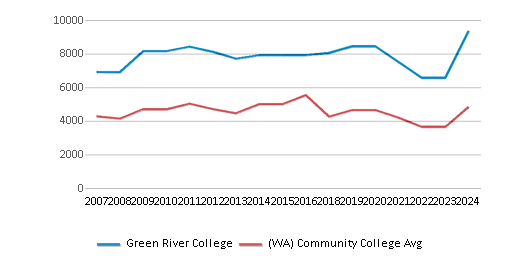
Student : Teacher Ratio
15:1
15:1
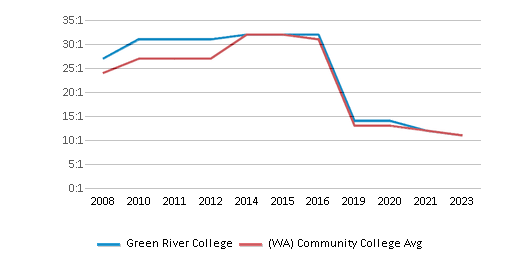
# Full-Time Students
4,700 students
2,028 students
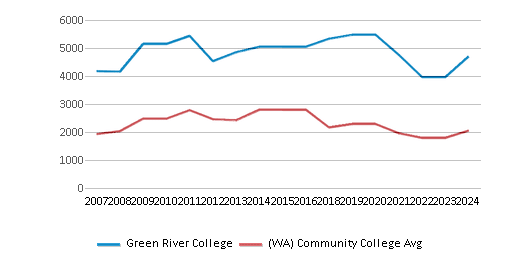
# Part-Time Students
4,649 students
3,179 students
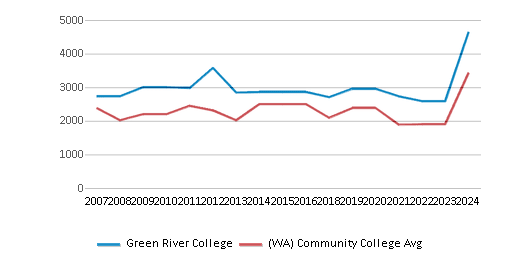
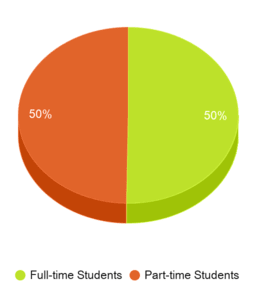

# Enrollment Undergraduate
934 students
494 students
# Full-Time Undergraduate Students
4,700 students
2,028 students
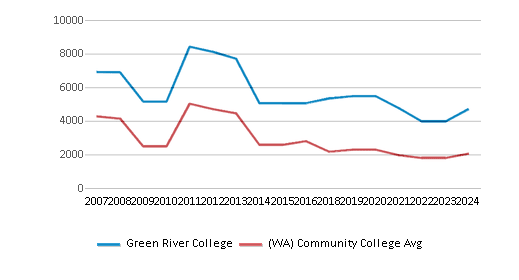
# Part-Time Undergraduate Students
4,649 students
3,179 students
Total Dormitory Capacity
n/a
140 students
% American Indian/Alaskan
1%
1%
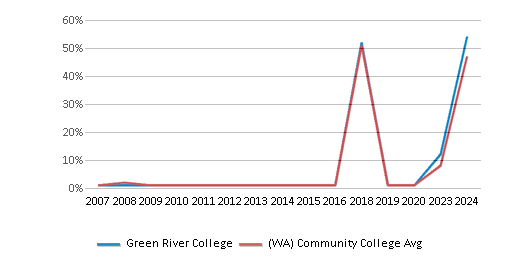
% Asian
14%
10%
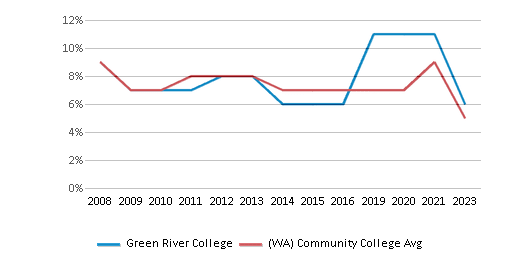
% Hispanic
13%
17%
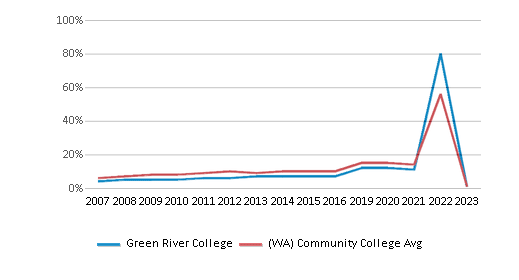
% Black
8%
7%

% White
35%
44%

% Hawaiian
1%
1%
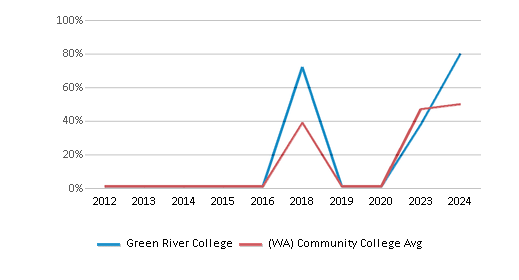
% Two or more races
8%
8%
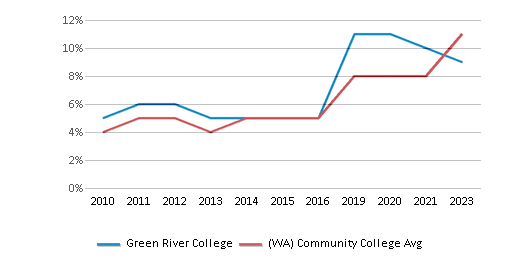
% Non Resident races
10%
3%
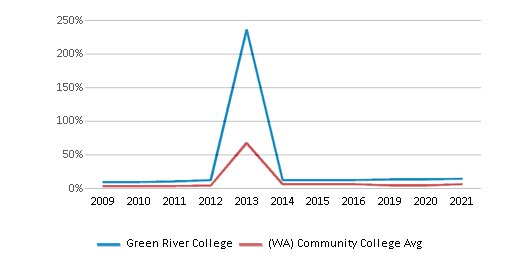
% Unknown races
9%
9%
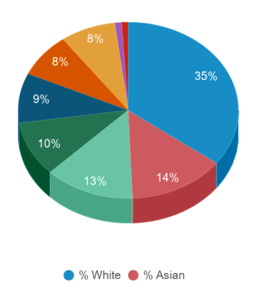
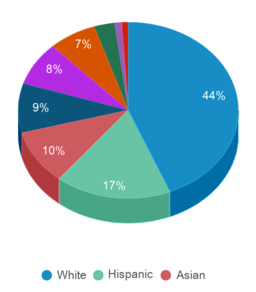
Diversity Score
0.83
0.75
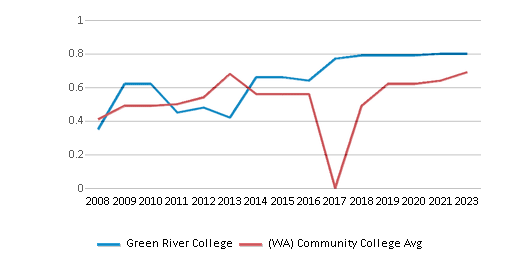
College Completion Rate (Students who graduate in less than 4 years)
36%
30%
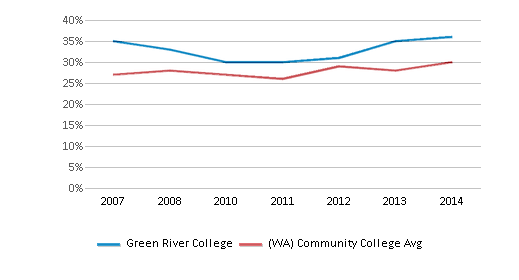
College Completion Rate (Students who graduate in 4 years or more than 4 years)
0.4077%
0.3584%
Average Graduate Earnings (10 Years)
$39,500
$36,400
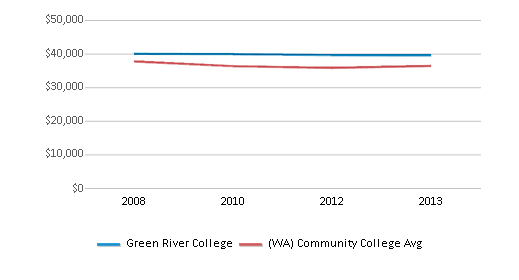
Tuition and Acceptance Rate
The public in-state tuition of $4,495 is more than the state average of $4,105. The in-state tuition has grown by 6% over four years.
The public out-state tuition of $10,431 is more than the state average of $7,359. The out-state tuition has grown by 122% over four years.
In-State Tuition Fees
$4,495
$4,105
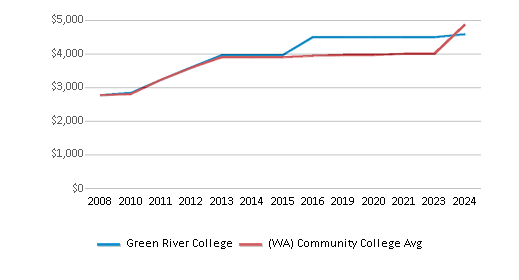
Out-State Tuition Fees
$10,431
$7,359
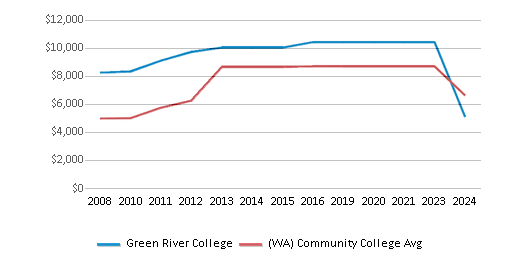
% Students Receiving Some Financial Aid
38%
58%
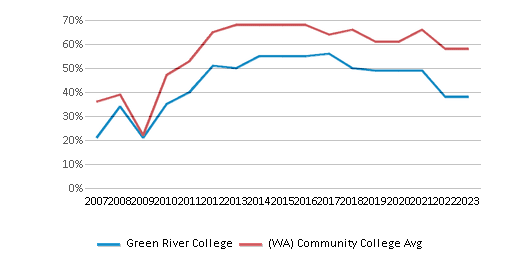
Median Debt for Graduates
$11,572
$11,794
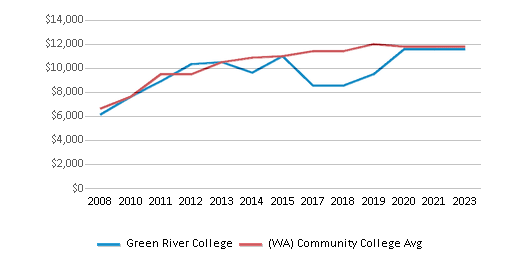
Median Debt for Dropouts
$6,380
$6,192
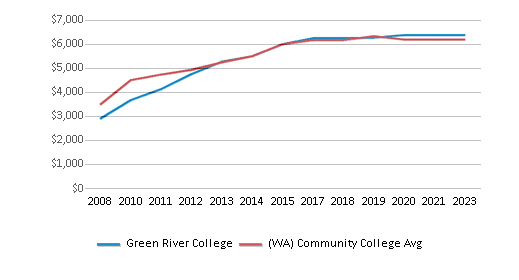
Acceptance Rate
n/a
99%
Source: 2024 (or latest year available) Integrated Postsecondary Education Data System (IPEDS) , School Administrators
School Notes
- Green River Community College is a two-year public college in Washington state that offers degrees and certificates in academic and professional and technical programs, as well as courses in continuing education and developmental education. Located on 186 acres, Green River has been committed to maintaining the ecological integrity of the campus's forested growth. Students enjoy this beautiful campus in its safe and peaceful environment. Green River offers courses and programs leading to a variety of associate degrees, certificates, and diplomas in professional and technical fields and academic transfer. The college also offers customized training, developmental and basic skills programs, as well as a variety of noncredit activities and courses for personal enrichment. Students enroll at the main campus in Auburn, the Center at Enumclaw, Center at Kent, other community locations, and through distance learning. Green River also offers a variety of support services to currently enrolled and prospective students to increase their chances for success. Green River Community College is accredited by the Northwest Commission on Colleges and Universities and by the Washington State Board for Community and Technical Colleges.
Frequently Asked Questions
How much does Green River College cost?
Green River College's tuition is approximately $4,495 for In-State students and $10,431 for Out-State students.
What is Green River College's ranking?
Green River College ranks among the top 20% of community college in Washington for: Diversity in US community colleges and Largest student body.
In what neighborhood is Green River College located?
Green River College is located in the Lea Hill neighborhood of Auburn, WA.
Recent Articles

Obtaining Your Bachelor's Degree at a Community College
Explore the evolving landscape of community colleges offering bachelor's degrees, addressing affordability, accessibility, and workforce needs.

A to Z of Community College Certificates and Courses
From business and healthcare to technology and skilled trades, the article showcases the breadth of options available to students seeking to enhance their knowledge, develop new skills, or pursue career advancement.

What is a Community College?
This comprehensive guide explains what a community college is, its history, and its role in higher education. It covers the types of programs offered, differences from four-year colleges, benefits of attending, and important considerations for prospective students, providing valuable insights for those exploring educational options.

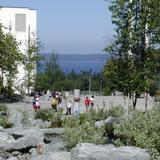




![그린리버 컬리지의 기숙사 Campus Corner Apartment (CCA)를 소개합니다!#미국유학 #유학 #유학생 #기숙사 #대학교 #미국대학 #브이로그 #일상 #greenrivercollege #dormitory #tour #vlog #daily #international #student #usa #korea [ENG] 미국 유학생 vlog | 학교 기숙사를 소개합니다! | Green River College Dormitory Tour](https://i.ytimg.com/vi/wV5ehtDb7NE/0.jpg)




